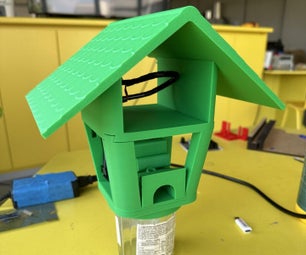Introduction: DIY Solid State Relay
Ever wanted to get rid of that tic-tac sound electromagnetic relays make? Electromagnetic relays require significant power to turn the electromagnet on/off and need a driver circuit for that, oh! wait! also they need a flyback diode to avoid the risk of inductive spiking which may not be suitable for projects running on battery or projects which you want to be power efficient.
If you want to get rid of all those things in once you are at the right place, here I will show you how to make Solid State Relay using just couple of components.
WARNING:- THIS PROJECT DEALS WITH HIGH-VOLTAGE (AC MAINS) USE FULL PRECAUTIONS. I WILL NOT BE RESPONSIBLE FOR ANY KIND OF DAMAGE CAUSED TO YOU.
LET's GET STARTED!!
DOWN HERE IS THE COMPLETE VIDEO TUTORIAL FOR THE SAME.
Step 1: THINGS WE NEED
https://www.utsource.net/ is an online platform for technicians, Makers, Enthusiasts, Kids to buy electronic components
Triac- BT136
Optocoupler- MOC3021 (used to isolate high-voltage from low-voltage input)
Resistors- 220 ohms and 470 ohms
LED - Just for indication of state
Breadboard- For making prototype
Jumpers
5V power supply ( I will use my arduino for this)
Finally the Schematic.
Step 2: OPTOCOUPLER
Add it to the breadboard.
Step 3: Add Negative Pin of Led to Pin 1 of Optocoupler
Step 4: Add 220 Ohm Resistor to +ve Pin of LED
Step 5: Add Jumper to Pin 2 of Optocoupler Which Will Go to -ve Power Supply
Step 6: Join Source of Triac to 4th Pin of Optocoupler
Step 7: Add 470 Ohm Resistor Between the Drain and 6th Pin of Optocoupler
Step 8: Add Two Jumpers, One to Drain and Another to Gate
Step 9: BINGO! Time to Test
Step 10: Add Power Supply
I used my arduino mega with blink sketch.
Step 11: Print the Final PCB
Don't know how to print PCB's? Watch this
From HERE you can download the PCB file in .pcb extension.
Don't know how to print PCB's?
PAY ATTENTION- you need to make the traces thick because it is a high-voltage project, to know how to tin PCB see this instructable
To see the working watch the video I linked in Introduction.
Thanks to DIY bloke for my inspiration for this project.
Thank You for coming here
see you again,
Tanishq Jaiswal

Participated in the
Trash to Treasure Challenge

Participated in the
Summer Fun Contest 2016











